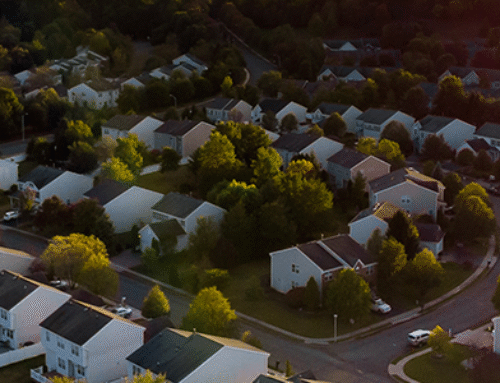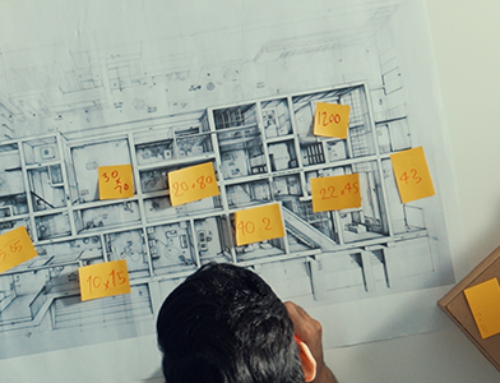April 2025 Construction Backlog Indicator by industry, region, and company size. Large contractors (>$100 million revenue) reported an average backlog of about 12.0 months – significantly higher than a year ago – while midsize firms saw backlog shrink versus April 2024. The South continues to have the highest regional backlog (~10.3 months), and the Northeast saw the greatest annual increase (rising to 8.7 months, up 1.8 months year-over-year). In contrast, heavy industrial and infrastructure contractors experienced substantial backlog declines over the past 12 months.
The latest Construction Backlog Indicator (CBI) shows that U.S. contractors entered Q2 2025 with 8.7 months of work booked, up from 8.5 months in March. This 0.2-month uptick brought backlog to its highest level in 20 months, about 0.3 months above April 2024’s reading. Much of the boost has come from larger construction firms. Contractors with annual revenues above $100 million have seen their backlog grow significantly year-over-year, reflecting major project bookings. In April, these large builders averaged roughly a full year of backlog (around 12 months on hand). By contrast, mid-sized firms ($30–100 million range) experienced slight backlog declines versus a year ago. Smaller contractors (under $30 million) did see modest backlog growth, but nothing like the surge enjoyed by their larger peers. This suggests that big players are capturing outsized project demand, while some mid-market builders face a lighter pipeline than they did last spring.
🔵 Translate Regional Trends into Strategic Action with a BPA
Your backlog size is only as good as your ability to manage it. A BPA helps you evaluate pipeline quality, labor capacity, and project fit—so you can win more profitable jobs.
Backlog trends also varied by sector and region. Contractors in the commercial and institutional space now report roughly 9.1 months of backlog, up from about 8.5 months a year prior – a healthy increase driven by continued strong demand for private building projects. In stark contrast, infrastructure builders (e.g. roads, public works) saw backlog fall to around 7.0 months, down significantly from last April’s levels near 10 months. The heavy industrial segment (factories, refineries, etc.) is likewise down – backlog fell to roughly 5.9 months, a drop of over 1.5 months year-over-year.
These declines imply that certain project types (manufacturing facilities, energy infrastructure) have been completing faster than new ones are starting, cooling the backlog in those categories. Meanwhile, commercial construction backlogs continue to expand steadily, pointing to robust activity in sectors like retail, offices, education, and healthcare.
Regional performance shows a similarly mixed picture. The South retains the largest backlog of work (approximately 10.3 months on average) – not surprising given the Sun Belt’s ongoing construction boom – though this level is roughly flat compared to both last month and a year ago. The Northeast saw a notable jump: backlogs there climbed to about 8.7 months, up from roughly 7.9 in March and only 6.9 a year earlier (a 1.8-month annual rise).
This points to a resurgence of projects in the Northeast, potentially in urban development and infrastructure upgrades. The West region’s backlog stands near 7.1 months (up slightly from last year), while the Middle States (Midwest) hover around 7.2 months and have eased down from early 2024. In summary, contractors in the South are working through the nation’s biggest backlogs, but the fastest growth in upcoming work is concentrated in the Northeast.
For residential builders, these regional trends are worth noting: markets with climbing backlogs may signal future tight competition for labor and subs, whereas areas with a dip in backlog growth could face a more moderate pace of activity.
It’s important to emphasize that the ABC backlog indicator primarily covers commercial and industrial construction. However, the broader construction landscape it reflects has implications for residential builders. Notably, this uptick in nonresidential backlog comes at a time when housing construction has been under pressure.
For example, U.S. housing starts dropped sharply in March 2025 – single-family starts were nearly 10% lower than a year prior – amid higher interest rates and building costs. In other words, while large contractors are logging strong future work in commercial sectors, homebuilders have been pulling back somewhat due to softer demand and affordability constraints.
This divergence highlights a shifting mix of construction activity: robust pipelines for big commercial projects on one hand, and a more cautious outlook in residential building on the other. Industry leaders should keep an eye on how these trends evolve in the coming months, as strength in one segment (commercial/institutional) and region (Northeast, South) may offset weakness in another (housing or certain industrial work).
Overall, the April data paints a picture of an industry still busy and growing in aggregate backlog, with large firms and certain regions leading the way, even as some segments cool and homebuilders navigate a challenging market.
🔵 Turn Strategic Recommendations into Business Systems with a BPA
Knowing what to do is half the battle. A BPA helps you operationalize these insights across your entire company.
Macroeconomic and Policy Influences on Residential Construction
Multiple macroeconomic and policy factors are shaping the outlook for construction firms in 2025, and residential builders are feeling many of the same impacts as their commercial counterparts.
Tariffs and trade policy have rapidly emerged as a key concern this year. In early April, a new round of U.S. tariffs was announced that represents the most sweeping trade measure in decades, including a universal tariff on many imports. Even before these policies took effect, the mere threat of tariffs on crucial building inputs like lumber, steel, and aluminum had already driven up input costs in early 2025.
Analysts note that domestic mills and suppliers cannot ramp up production overnight to fully replace imports, so contractors remain exposed to global supply swings and rising prices. In fact, by April, 87% of contractors reported receiving notices of tariff-related price increases from suppliers. This surge in material costs – from steel rebar to electrical components – squeezes profit margins on ongoing projects and makes budgeting new projects more difficult.
Residential builders, who rely heavily on lumber (often imported from Canada) and other materials, are particularly sensitive to these price escalations. Recent history offers a warning: when 20% lumber tariffs were imposed a few years ago, softwood lumber prices spiked ~80% within months, severely pinching homebuilders’ margins and forcing some developers to delay or scale back projects. The current tariff environment could yield similar pressures if builders do not plan accordingly.
Companies must monitor material price indices closely and consider strategies (like escalation clauses, bulk purchasing, or alternate suppliers) to mitigate the impact of these trade-related cost surges.
Labor availability is another persistent challenge, and it remains front and center for construction firms with $1M+ in revenue. Low unemployment and an aging trades workforce have made skilled labor scarce across the country. Recent surveys show that 92% of construction firms with unfilled salaried positions are struggling to hire qualified people – a situation that is even more pronounced than a year ago.
In January, ABC projected the industry would need to attract roughly 439,000 net new workers in 2025 to meet demand, on top of normal hiring to replace retirees. This shortfall spans from craft labor (e.g. carpenters, electricians) to site supervisors and project managers.
If the industry fails to add enough workers, wage costs will keep climbing – already, construction wages were up about 4.4% year-over-year as of early 2025, outpacing the average across all industries. For residential builders, labor shortages mean higher subcontractor bids, scheduling delays, and intense competition for dependable crews.
Additionally, evolving immigration and visa policies are impacting the labor pool. A significant share of U.S. construction labor is foreign-born (about 25% nationally), so stricter immigration enforcement and deportation trends have started to exacerbate worker shortages in some areas. Economists warn that reduced immigration could deepen the construction labor gap, leading to further project delays and wage inflation. On the flip side, the recent rebound in immigration to pre-pandemic levels has helped stabilize the workforce somewhat.
Residential contractors should stay alert to labor market conditions – both locally and nationally – as competition from large commercial projects (which often pay premium wages) can pull workers away, making it even harder to staff home-building crews.
Underlying demand trends and the broader economy in 2025 also play a critical role in shaping residential construction activity. On one hand, significant federal investment in infrastructure and industrial projects (e.g. semiconductor plants, renewable energy facilities) has been driving construction demand for large firms, contributing to the high backlog we saw in April. On the other hand, high interest rates and affordability challenges have tempered housing demand compared to the frenzy of the past few years.
The Federal Reserve’s tightening cycle in 2022–2024 pushed up mortgage rates, which are still elevated; as a result, many would-be homebuyers have pulled back or been priced out, directly slowing new home sales and construction starts. Recent data confirms this cooling: single-family housing starts in Q1 2025 were down mid-single-digits percent year-to-date, and March starts fell by double digits from February’s pace.
Home builders are also working down a backlog of previously sold homes under construction – the total units under construction in March fell to the lowest level since mid-2021. This moderation in residential building is occurring even as the overall economy shows mixed signals.
Regional demand shifts are evident: for instance, the Northeast – after lagging – is now seeing an uptick in construction projects (reflected in backlog gains), whereas the once-scorching Southern markets have cooled slightly from last year. Furthermore, credit conditions and lending standards have tightened somewhat for development loans, which can especially affect smaller builders’ ability to finance new projects.
Yet, it’s not all downbeat: housing inventory remains low by historical standards, which is supporting underlying need for new homes in many markets. And looking ahead, industry forecasts anticipate that if interest rates ease in late 2025 or 2026, pent-up housing demand could re-energize residential construction.
For now, residential construction businesses must navigate a delicate period where cost headwinds (tariffs, labor, financing) coincide with cautious demand. Keeping an eye on policy developments – such as infrastructure spending rollouts, tax incentives, or further trade actions – will be important, as these can swiftly alter the construction landscape.
Actionable Insights for Residential Construction Firms
In this dynamic environment, owners of residential construction firms (especially those above $1M in revenue) should take proactive steps to manage risk and capitalize on areas of strength. The data and trends above suggest several key strategies and risks to monitor in the coming months.
Below are some focused recommendations for keeping your business on a steady footing:
- Manage Material Cost Volatility: Mitigate the impact of rising material prices by locking in prices where feasible, diversifying suppliers, and including escalation clauses in contracts. With tariffs driving up costs, closely monitor commodity trends and adjust bids to ensure profit margins are protected.
- Bolster Workforce Recruitment and Retention: Given the acute labor shortage, invest in hiring, training, and retention programs to secure the talent you need. Consider raising wages competitively, strengthening apprenticeship pipelines, or collaborating with local trade schools. A stable core team will help you deliver projects on time despite the tight labor market.
- Diversify Your Project Portfolio and Backlog: Aim for a balanced mix of project types (e.g. a blend of custom homes, remodeling, light commercial) and clients. This can cushion your business if one segment slows. For example, if new home demand softens due to interest rates, having some renovation or commercial tenant improvement work can keep revenue flowing. Avoid over-concentration in any single market sector or geographic area.
- Stay Agile with Market and Policy Changes: Continuously track economic indicators (interest rate trends, housing permits, consumer sentiment) and policy shifts (new tariffs, code changes, incentives). Being well-informed will help you time key decisions – such as land purchases or expansion plans – and pivot quickly if conditions change. In particular, watch for potential relief on material tariffs or signs of interest rate easing that could spur a housing uptick.
Beyond these strategies, maintain a disciplined, data-driven approach in running your construction business. In today’s climate, successful residential builders are those who can adapt to rising costs while still meeting client expectations. This means rigorously managing project budgets and schedules – for instance, double-checking estimates to account for the latest lumber or steel prices, and building some contingency for possible delays.
It also means communicating proactively with clients about the changing environment. Many homeowners are unaware of how tariffs or supply-chain issues might impact their project; educating them early can help manage expectations and justify necessary price adjustments.
Additionally, focus on operational efficiency: streamline workflows and eliminate waste to offset higher input costs where possible. Lean construction practices and smart use of technology (like project management software or off-site prefabrication) can boost productivity when labor is hard to find.
Finally, keep an eye on your backlog quality as much as its size. The April 2025 backlog data underscores that having work on the books is crucial, but it’s equally important to ensure those future projects are viable and profitable under evolving conditions. Regularly revisit your backlog and upcoming schedule to verify that the budgets still hold true given any new cost information.
If necessary, renegotiate or rebid elements that have seen price spikes (many clients understand these are external factors). By actively managing both the pipeline of work and the risks attached to each project, residential construction firms can ride out the current headwinds.
In essence, the goal is to stay nimble and informed: leverage the strong parts of the market (like any regional growth or new funding opportunities) while safeguarding your business against the challenges (tariffs, labor gaps, interest rates) that define this period. With prudent strategy and leadership, construction businesses can not only withstand these trends but emerge well-positioned for the anticipated upswing in demand when conditions improve.
Plan Proactively, Perform Profitably
As backlog levels rise in some sectors and soften in others, residential builders are navigating a year filled with complexity—but also possibility. With tariff pressures, labor gaps, and high borrowing costs all converging, success in 2025 demands more than grit. It requires structure, focus, and a plan that aligns real-time trends with actionable business strategy.
That’s exactly where the Business Plan of Actions (BPA) from Small Business Growth Partners delivers. With over 4,000 construction-specific BPAs completed, it’s the industry’s most trusted resource for builders who want more clarity, better systems, and stronger results.
And it’s not just for your company—builders working closely with key subcontractors and trades are encouraging their partners to get a BPA as well. When your subcontractors are profitable, reliable, and running smarter operations, your projects benefit directly.
A BPA is ideal if:
- You’re growing but feeling operational strain
- You’re trying to stabilize margins amid cost shifts
- You need clearer processes and better accountability
- You want your team—and your subcontractors—to operate at a higher level
No matter where your business stands in 2025, the path forward is stronger with a plan.
👉 Get started on your BPA today →
Sources: Recent ABC Construction Backlog Indicator releases; NAHB/Eye on Housing economic data; KPMG and industry analyses on tariffs and labor supply; and other current construction market research.






